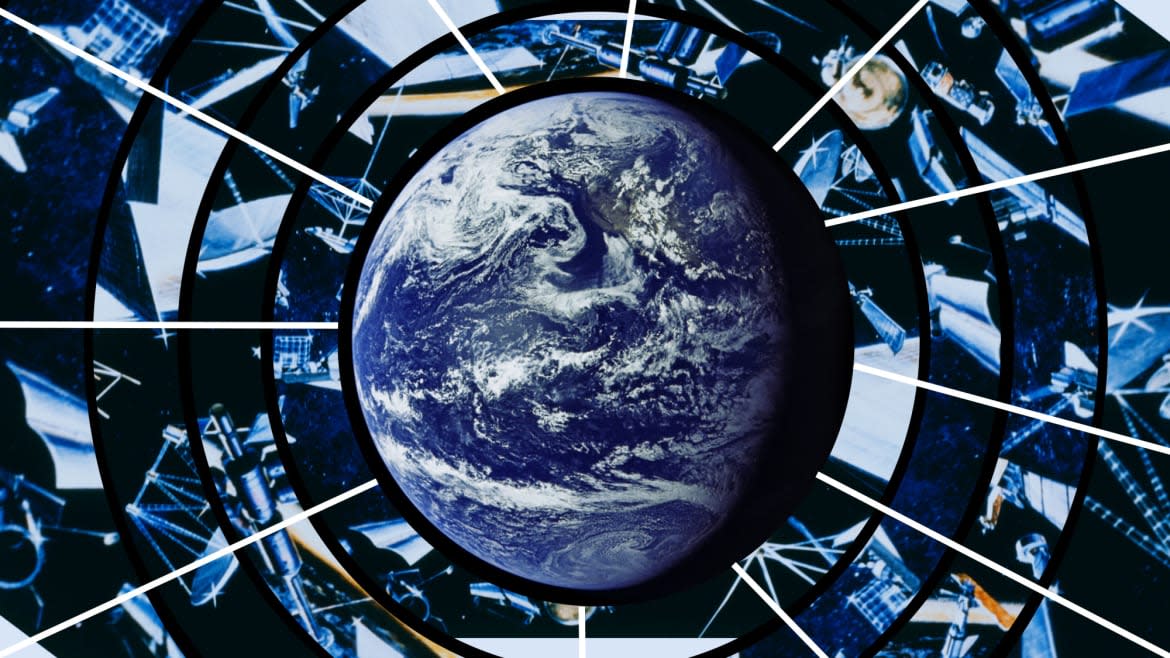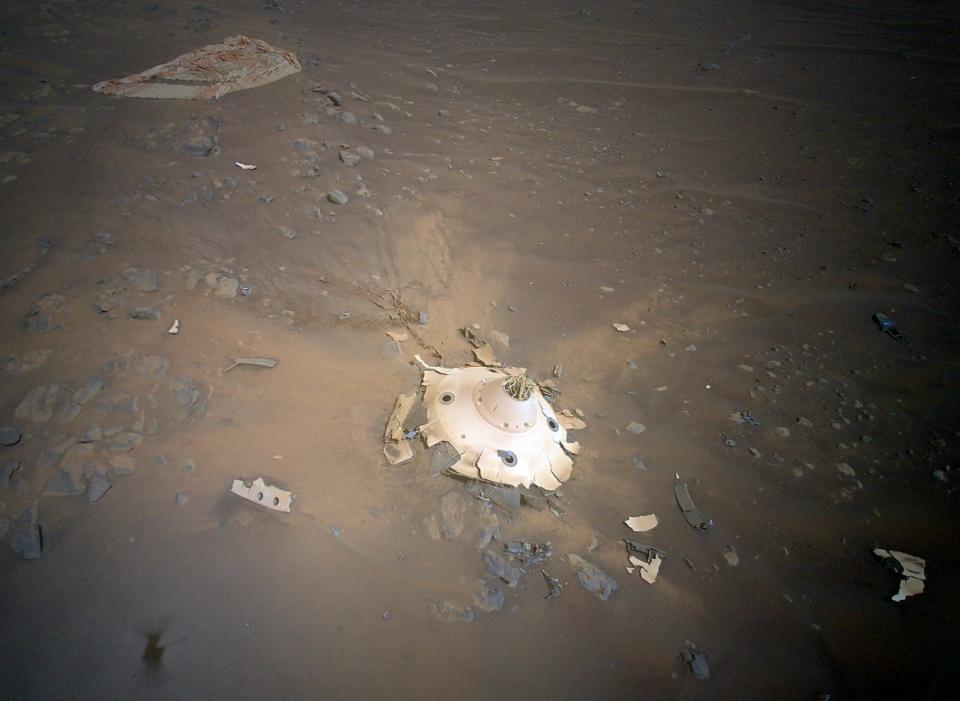The Solar System Isn’t Ready to Deal With Humanity’s Garbage

The next time you see a shooting star, there’s a small chance it’s complete garbage. That’s not a knock on any meteors or comets out there. It’s the truth. To deal with trash that piles up on the International Space Station, astronauts put them into big cargo bins and jettison them back into Earth’s atmosphere where it all burns up in a blaze of glory.
It’s not the most eco-friendly system for taking the space trash out, and it raises questions about what kind of impact we’re creating by adding waste and gasses into an already strained atmosphere on Earth. But it’s the only one we have right now.
That might soon change if Steve Sepka has anything to do with it.
“One of the great ways to deal with trash and waste is to compact it,” Sepka, who is NASA’s project manager for trash compaction and processing system, told The Daily Beast. “But there’s also a lot of problems with space because we’ve got limited power, volume, and mass. You also want to be able to take the liquids out and process those or reuse it.”
One project NASA is working on right now is a compaction system that could turn astronaut garbage into tiles that can then be used for practical applications like radiation shielding. Such an approach hits home at an ethos that’s relevant here on Earth but especially important if you’re an astronaut who is weeks or even months away from a crucial resupply mission: reduce, reuse, recycle.
Sepka was recently the manager for NASA’s Waste to Base Materials Challenge, held this past spring. It was a call to citizen scientists all over the world to come up with new ideas and concepts to turn astronaut garbage on places like the moon or Mars into usable material.
The emphasis was on sustainability. Future astronauts on a place like Mars can’t always rely on regular resupply missions. As such, they need to be able to repurpose any and all materials they have at their disposal.
“We looked at anything from fecal waste and what to do with it, to plastics and garbage,” he said. “Anything we can do to reuse, recycle, and repurpose it.”
The challenge marked the beginning of answering a question that’s becoming more and more relevant as NASA embarks on its bold goal of going back to the moon and, eventually, Mars and beyond: What the hell are we going to do with all our extraterrestrial garbage? After all, astronauts won’t be able to just yeet it back to Earth like those on the ISS.
The challenge generated a variety of interesting solutions ranging from using cotton from old astronaut clothes or even packing foam and urine to grow plants in a hydroponics system, to using algae to convert carbon dioxide into oxygen.
Undoubtedly, the grossest category of the challenge involved what to do with fecal waste. One example involves fermenting fecal matter in order to break it down. The idea is to “get anaerobic decomposition very similar to what goes on with composting,” Sepka said. “We’re getting microbes to do it and what to do with leftover materials. It’s very similar to what we do on Earth.”
Humans Keep Dumping Tons of Trash on Mars
Another involved using poop as a natural fertilizer, like Mark Watney growing potatoes in The Martian. As with so much science fiction before, it could have real world use cases once researchers and engineers get behind it.
We can’t possibly hope to reuse all of our garbage though. Sometimes trash is trash. There’s nothing else to do but get it out of the house. This raises another big set of issues that needs to be solved. That’s because one of the biggest challenges when it comes to making a galactic trash system is the fact that we want to address what scientists call “planetary protection,” or the practice of preventing our dirty Earth-originated materials from contaminating celestial bodies like planets or moons.
So sure, we could bury the off-Earth garbage, but it could result in contamination. For example, if an astronaut disposes of trash in any old Martian crater, microbes created by the garbage could develop—which could result in a situation where we’re misled into thinking that we discovered life when all we found was our own crappy microbes.
“You want to make sure your footprint is low,” Sepka explained. “We’re looking for life forms. You want to make sure that you did not pollute it and you’re just looking at your own signal.”
It certainly doesn’t help that we are already trashing places like Mars and the moon. Over the past spring, NASA released a photo of the backshell from the Perseverance rover. Later that summer, the agency released a pic of a thermal blanket that they discovered embedded into a Martian rock.
My team has spotted something unexpected: It’s a piece of a thermal blanket that they think may have come from my descent stage, the rocket-powered jet pack that set me down on landing day back in 2021. pic.twitter.com/O4rIaEABLu
— NASA's Perseverance Mars Rover (@NASAPersevere) June 15, 2022
In fact, we’ve dumped an estimated 15,694 pounds of trash on Mars from the past 50 years of exploration alone. And even that’s tiny in comparison to the whopping 400,000 pounds of garbage including materials, rovers, rocket boosters, and assorted national flags we’ve left behind on the moon. Imagine how much more it’d be once we actually start colonizing the Red Planet or the lunar surface.
One 2020 model published in Scientific Reports states that we need 110 people to properly colonize Mars, whereas Elon Musk hopes that we get 1 million people there. On either of those extremes, we’re still talking about exponentially more trash than there is now. That’s why finding out the best way to get rid of it is something we need to start thinking about now, rather than later when we do arrive on these planets.
To that end, it seems like NASA is a bit slow to come up with a good system. Despite its numerous delays, the Artemis missions to get back to the moon are well underway. This means that we’ll realistically be able to start colonizing the lunar surface within the next decade or so. Within a few decades, we’ll also have set foot on Mars.
According to Sepka, this means the agency will have to not only develop a trash system for when we get there, but we also need to deal with garbage in the spacecraft to get there.

Perseverance’s backshell sitting upright on the surface of Jezero Crater. Humans have generated nearly 16,000 pounds of trash on Mars in the past 50 years alone.
“The first thing to look at is in-transit because that’s a whole different problem than being on a planet,” he explained. “That’s what we’re looking at now: being able to get people there and all the issues of having trash build up on a spacecraft. What do you do with it?”
That’s why trash compaction is so key. The smaller you can make it, the more easily you can save space aboard a capsule. If it gets too full, said Sepka, crew planners aren’t ruling out simply jettisoning it out into the cosmos—though he admits that wouldn’t be the ideal solution.
“That’s not popular,” he said. Mission designers don’t want to feed into the perception that humanity is treating the solar system like its own personal landfill. Sustainable waste management would not only help crews thrive in a resource deprived environment like Mars, but they would also advance the moral imperative to safeguard other worlds from the environmental destruction and anthropogenic climate change that has wreaked havoc on Earth. Hell, we have literally plastic in our blood because of it.
So, when we go to a new planet then, it only makes sense that we would want to get off on the right foot. That means doing all the things that we didn’t do on Earth and start recycling—one piece of extraterrestrial trash at a time.
Got a tip? Send it to The Daily Beast here
Get the Daily Beast's biggest scoops and scandals delivered right to your inbox. Sign up now.
Stay informed and gain unlimited access to the Daily Beast's unmatched reporting. Subscribe now.

